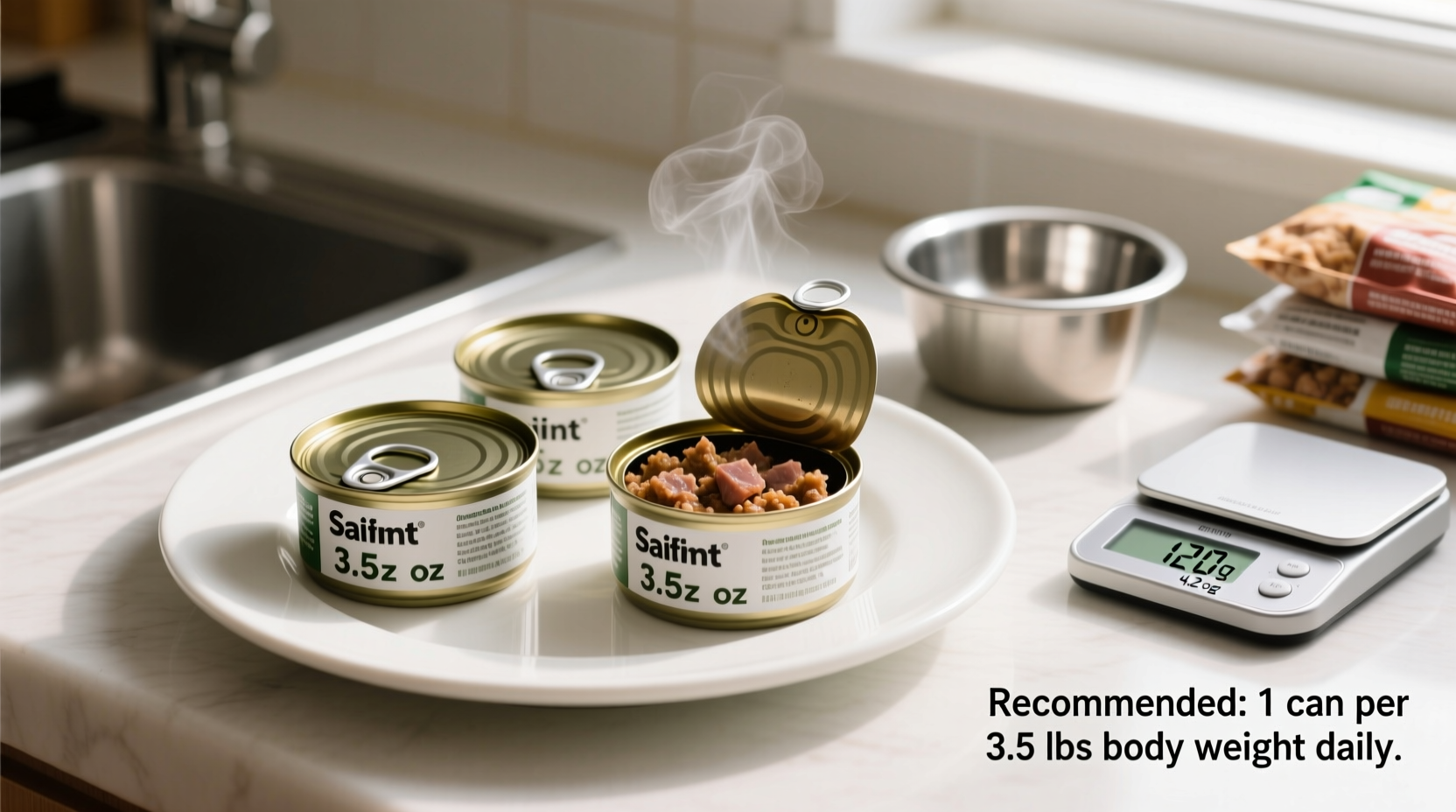Most adult cats need 1-2 standard 5.5-ounce cans of wet food per day, divided into two meals. However, the exact amount depends on your cat's weight, age, activity level, and health status. A 10-pound adult cat typically requires approximately 5-6 ounces of wet food daily for optimal nutrition and weight maintenance.
Understanding Your Cat's Daily Nutritional Requirements
Getting your cat's food portions right isn't just about convenience—it directly impacts their health, longevity, and quality of life. Unlike dogs, cats are obligate carnivores with specific nutritional needs that must be met through proper portioning. Feeding too little can lead to malnutrition and muscle wasting, while overfeeding contributes to obesity, which affects more than 60% of domestic cats in the United States according to the American Veterinary Medical Association.
Key Factors Determining Your Cat's Daily Food Needs
Before you reach for that can opener, consider these critical factors that influence how many cans your cat needs each day:
Weight-Based Calculation Method
The most accurate way to determine portions uses your cat's body weight. Most veterinarians recommend 24-30 calories per pound of body weight for adult maintenance. Since a standard 5.5-ounce can of wet food contains approximately 150-220 calories, you can calculate precisely:
| Cat Weight | Daily Calorie Needs | Standard 5.5oz Cans | Feeding Schedule |
|---|---|---|---|
| 5 lbs (kitten) | 120-150 calories | 0.75-1 can | 3 small meals |
| 8 lbs (adult) | 190-240 calories | 1-1.5 cans | 2 meals |
| 12 lbs (adult) | 290-360 calories | 1.5-2 cans | 2 meals |
| 15+ lbs (overweight) | 250-300 calories | 1.25-1.75 cans | 2 measured meals |
Age-Specific Nutritional Evolution
Your cat's food requirements change significantly throughout their life stages. Understanding this nutritional timeline helps prevent common feeding mistakes:
- Kittens (0-12 months): Need 3-4 times more calories per pound than adults. Feed 3-4 small meals daily using kitten-formulated food.
- Adults (1-7 years): Require consistent daily portions based on weight and activity. Most thrive on two meals per day.
- Seniors (7+ years): Often need fewer calories but higher quality protein. Consult your vet about adjusting portions for age-related metabolism changes.
Reading Cat Food Labels Like a Professional
Not all cat food is created equal. The "how many cans" question depends heavily on the specific product's nutritional density. Here's what to look for:
- Calorie content: Must be listed on every can (look for kcal/kg or kcal/can)
- Feeding guidelines: Manufacturer recommendations based on weight (use as starting point only)
- Protein source: First ingredient should be named animal protein (chicken, salmon, etc.)
- Moisture content: Should be 75-80% for proper hydration
Remember that manufacturer feeding guidelines often overestimate portions by 20-30%, potentially contributing to weight gain. Always adjust based on your individual cat's body condition.
Practical Feeding Strategies for Different Household Situations
Real-world feeding involves more than just math. Consider these practical scenarios:
Single Cat Households
For most healthy adult cats, divide the daily portion into two meals—morning and evening. This mimics natural hunting patterns and helps maintain stable blood sugar. Leave food out for 20-30 minutes, then refrigerate leftovers.
Multiple Cat Households
When feeding multiple cats, separate them during meals to prevent competitive eating. Use timed feeders or feed in different rooms. Monitor each cat's body condition independently, as their needs may vary significantly even within the same household.
Special Health Considerations
Certain medical conditions dramatically alter feeding requirements:
- Diabetes: Requires consistent feeding schedule with veterinary-prescribed therapeutic food
- Kidney disease: Often needs phosphorus-restricted formulas with adjusted portions
- Obesity: May require 15-25% fewer calories than standard calculations
When health conditions exist, always follow your veterinarian's specific feeding recommendations rather than general guidelines.

Assessing If You're Feeding the Right Amount
Numbers on a can don't tell the whole story. Use these practical assessment methods:
Body Condition Scoring
Run your hands along your cat's sides—they should feel like the back of your hand (knuckles visible but not prominent). From above, you should see a noticeable waistline. If you can't feel ribs at all, you're likely overfeeding.
Energy Level Monitoring
A properly nourished cat maintains consistent energy throughout the day—not lethargic after meals, nor constantly begging. Sudden changes in activity level may indicate nutritional imbalance.
Weight Tracking Protocol
Weigh your cat monthly using a baby scale or pet scale. Healthy adult cats should maintain the same weight within a 0.5-pound range. Significant fluctuations warrant portion adjustments.
Avoiding Common Feeding Mistakes
Even well-intentioned cat owners make these frequent errors:
- Free-feeding wet food: Causes spoilage and makes portion control impossible
- Mixing inconsistent brands/formulas: Creates nutritional imbalances
- Ignoring treat calories: Can represent 20%+ of daily intake if unchecked
- Not adjusting for seasonal activity changes: Indoor cats may need 10-15% fewer calories in winter
When to Consult Your Veterinarian
While general guidelines provide a starting point, your veterinarian remains the best resource for personalized feeding recommendations. Schedule a nutritional consultation if:
- Your cat gains or loses more than 10% of body weight in 2 months
- You're introducing a new diet or managing a health condition
- Your cat consistently leaves food or seems hungry after meals
- You're unsure about proper portion sizes for your specific cat
Veterinary nutritionists can perform body composition analysis and create customized feeding plans that account for your cat's unique metabolic needs—something no general guideline can fully address.
Conclusion: Finding Your Cat's Perfect Portion
Determining how many cans of cat food per day requires balancing general guidelines with your individual cat's needs. Start with the weight-based calculations, then adjust based on body condition, energy levels, and veterinary guidance. Remember that consistency matters more than perfection—regular monitoring and small adjustments keep your feline companion healthy for years to come.











 浙公网安备
33010002000092号
浙公网安备
33010002000092号 浙B2-20120091-4
浙B2-20120091-4